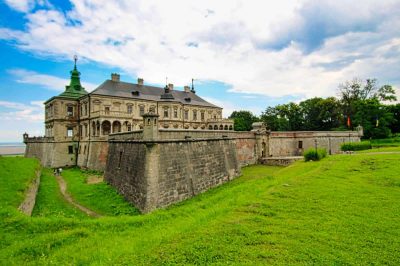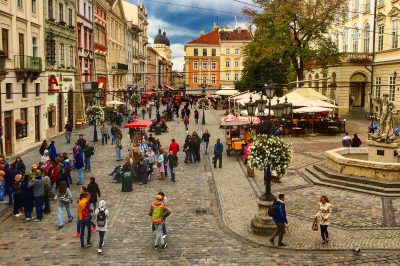Western Ukraine is the heart of the country. This is where the majority of people speak Ukrainian. It is home to some of the most important pilgrimage sites. And there are many of Western Ukraine sights that no one interested in Ukraine should miss. Today we want to introduce you to the Top 15 Western Ukraine sights.
Where is Western Ukraine?
First of all, however, it is important to agree on what actually is Western Ukraine. Since Ukraine is divided into so-called oblasts, the oblasts of Lviv, Transcarpathia, Bukovina, Ivano-Frankivsk and Ternopil actually always belong to Western Ukraine. In most cases, the oblasts of Lutsk and Rivne are also included. Since we treat Transcarpathia and the Carpathians and Bukovina separately, in this article we focus on the Western Ukraine sights in Rivne, Lutsk, Ternopil oblasts and the areas of Lviv and Ivano-Frankivsk oblasts that are not in the mountains.
Sights in Lviv Oblast
The Lviv Oblast is the heart of Galicia, the Austro-Hungarian part of Ukraine until 1918. This is where you can find Lviv, one of the most famous cities in Ukraine, but also culturally this part of the country is in many respects one of the most important regions.
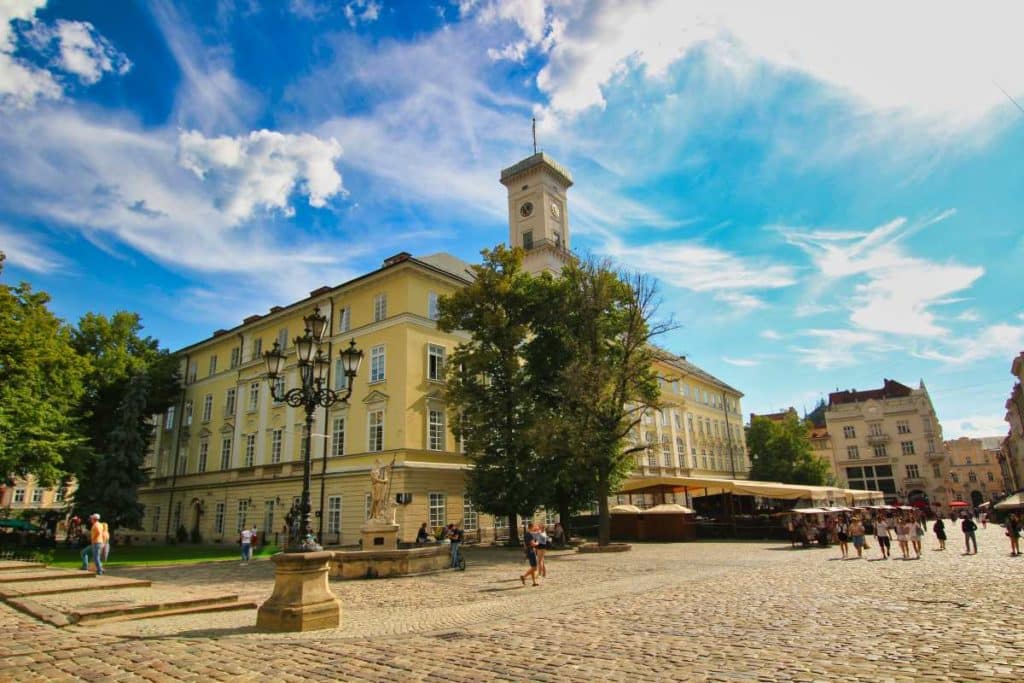
Lviv
Lviv is the heart of Western Ukraine and also the largest city in Ukraine west of Kyiv. The city was once under Polish and later Austrian rule and has a charm of its own. Here you can find not only the best coffee and cakes in Ukraine, but also countless sights. The old town is a UNESCO World Heritage Site and the many buildings from the Austrian period bring the time of the imperial and royal monarchy back to life. You can read more about this unique city in our Lviv sights and Lviv tips.
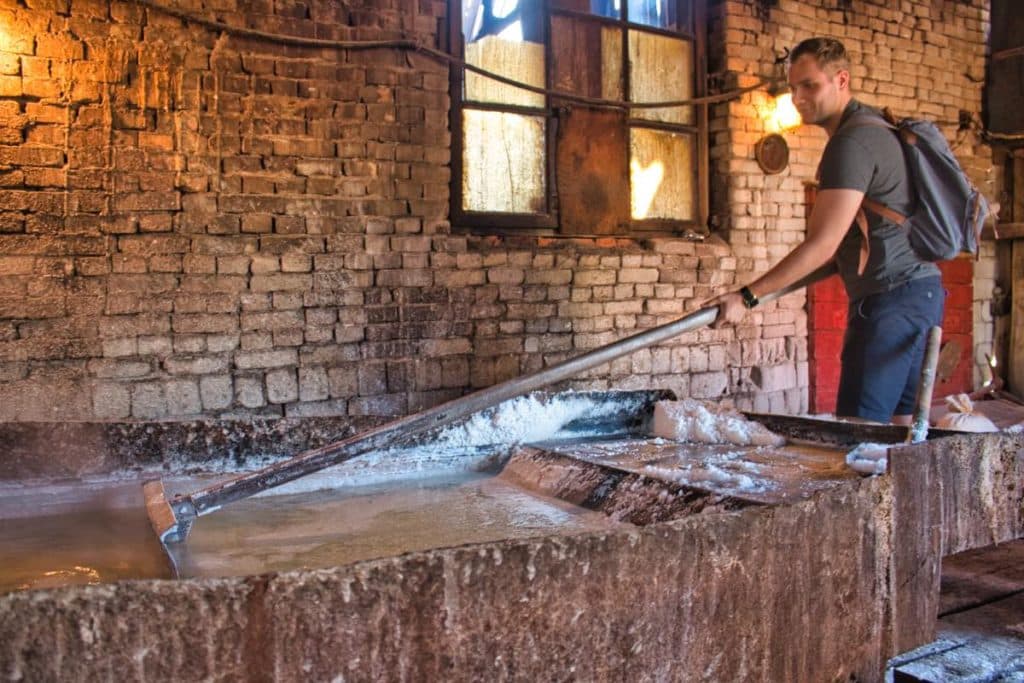
Drohobych
Once the city was the main production site for salt, which made Drohobych a prosperous city. That is why there are two impressive wooden churches here, one of which is also a UNESCO World Heritage Site. But there is more to discover in the city. Besides the salt mine, where salt is still extracted today, there are some local specialties, such as the salt cake, the salt coffee or even the Drohobych sausage.
This is a great refreshment to climb the town hall tower and enjoy the view. The spirit of Drohobych at the turn of the century is best felt in the magnificent avenue of villas of oil magnates. Particularly impressive is also the magnificent synagogue, which was recently renovated. It testifies to the rich Jewish culture of the city, which includes the writer Bruno Schulz, who was murdered here by an SS man.
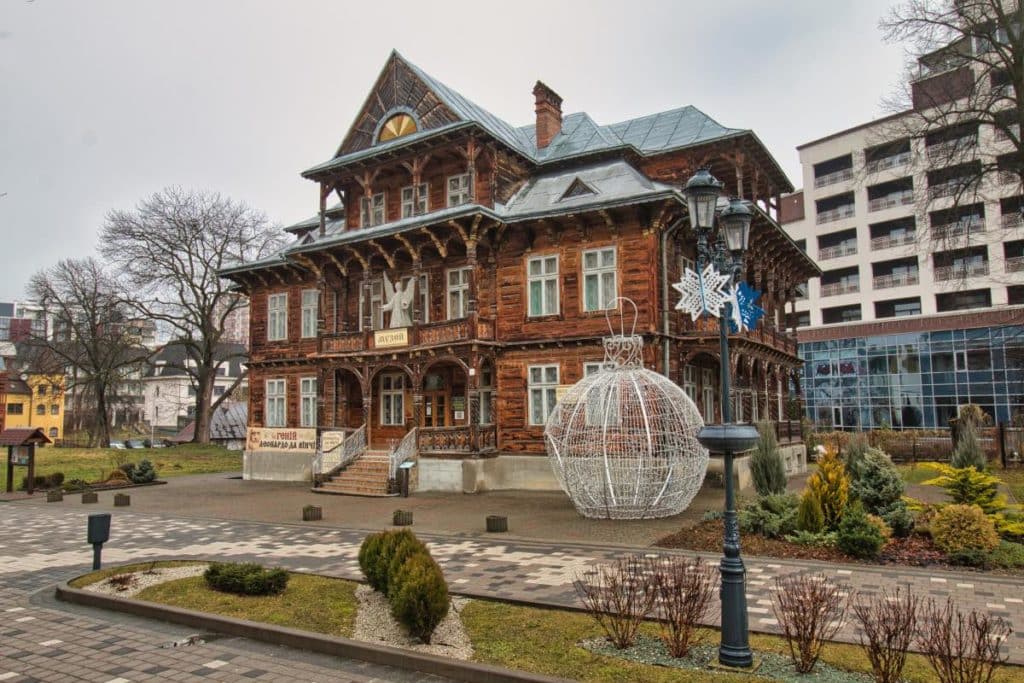
Truskavets
Truskavets is an old spa town, which was developed as such as early as 1829. Located at the foot of the Carpathians, the local healing springs are supposed to help with problems with kidneys and bile. For this purpose, spa guests come every day with their own cup and drink the naftusya, which tastes slightly of oil. In addition to the spa facilities and wellness hotels, the spa architecture of the town is also worth discovering and small trips can be easily organized from here to the nearby Carpathian Mountains.
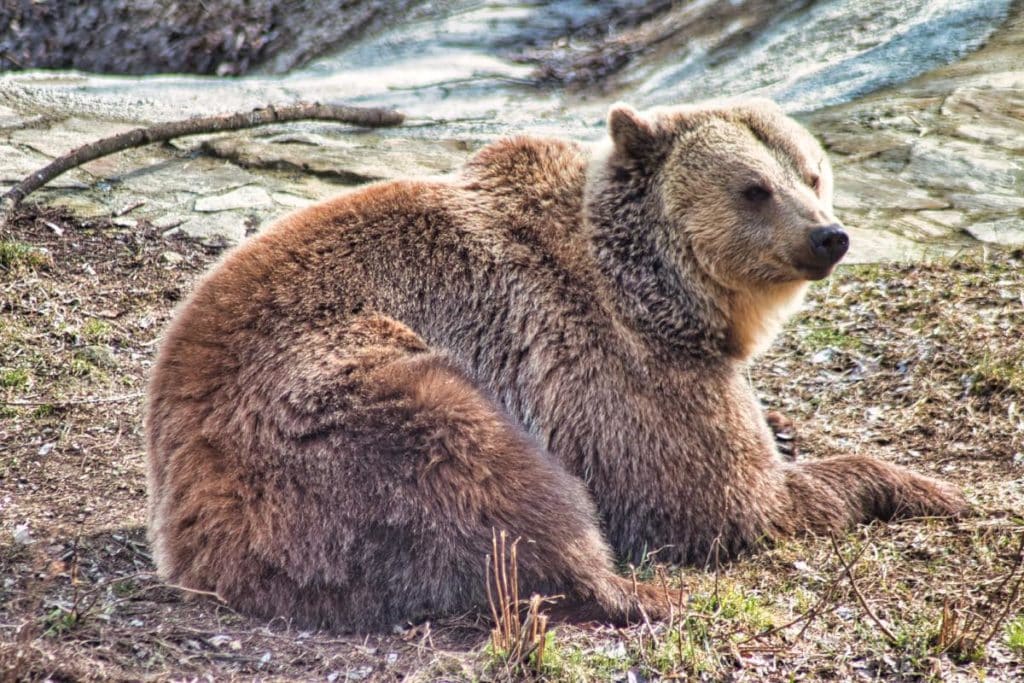
Bear Enclosure Domazhyr
In many zoos, in circuses or even at private enclosures of excursion venues, many bears are still kept in captivity in Ukraine under conditions that are not appropriate for the them. The Austrian organization Four Paws has therefore taken up the cause of saving the bears of Ukraine and ensuring that the bears kept in captivity can at least live in the enclosures of a species conservation program under appropriate conditions. The bears like it and you can learn a lot about how the bears were freed and what is being done to protect them. However, it is also possible to observe bears even in the wild in the Carpathians. However, there are no organized tours for this.

Zhovkva
Zhovkva is an ideal city – at least if the ideas of the Italian Renaissance are anything to go by. Because Zhovkva was built in the late 16th century and constantly expanded – and that according to the ideas of Italian Renaissance master builders. Thus, the town’s marketplace has an ideal shape and many buildings are also Renaissance masterpieces. In addition to a typical wooden church, there is the synagogue, which unfortunately has not yet been renovated. The magnificent temple was once one of the most beautiful in the region. The family of Hersch Lauterpacht, the creator of the legal term “crimes against humanity”, also came from Zhovkva. He and a colleague are memorialized in the book “Return to Lviv “* by Philippe Sands.
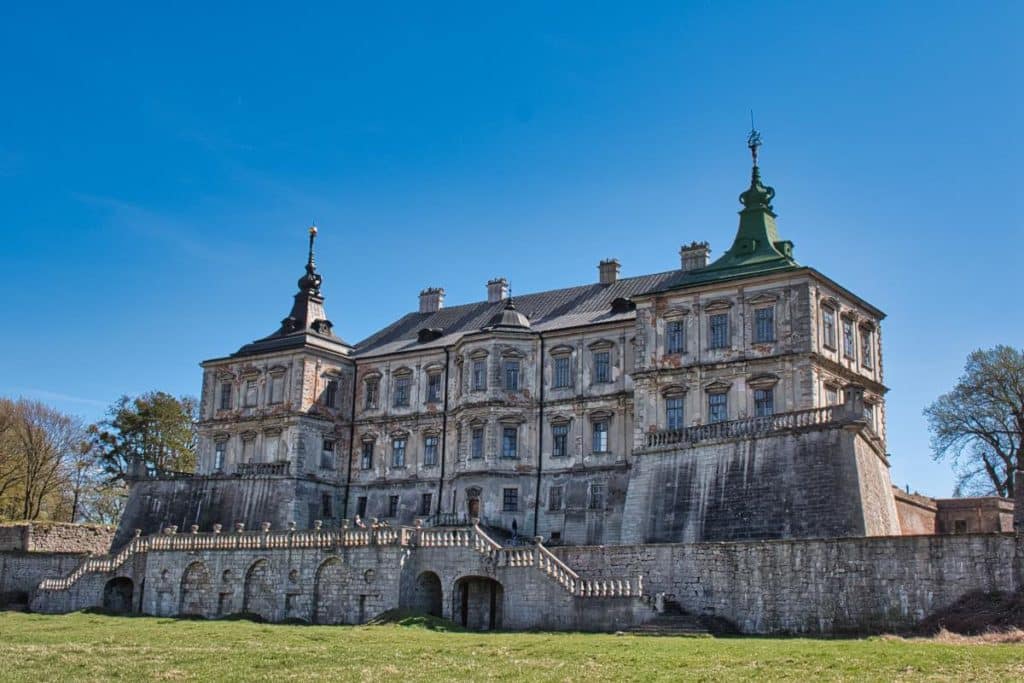
Golden Horseshoe
The castles of the Golden Horseshoe are worth a day trip from Lviv. Olesko Castle, situated on a hill, was the birthplace of the Polish King John III Sobieski, who later defeated the Turks before Vienna. Here you can not only throw a coin into the very deep castle well, but also enjoy a great view of the surrounding countryside.
A few kilometers away, Pidhirzi Castle has already made it into some travel magazines as a Lost Place. However, the castle is not a lost place at all, because the art collections of the city of Lviv take care of the area. Nevertheless, it’s worth a trip, and the mystical pictures you can take here are especially Instagram-worthy. In Solochiv Castle, on the other hand, you can learn a lot about the image of China in the Renaissance and about the courtly life of Jan III Sobieski and his French wife.
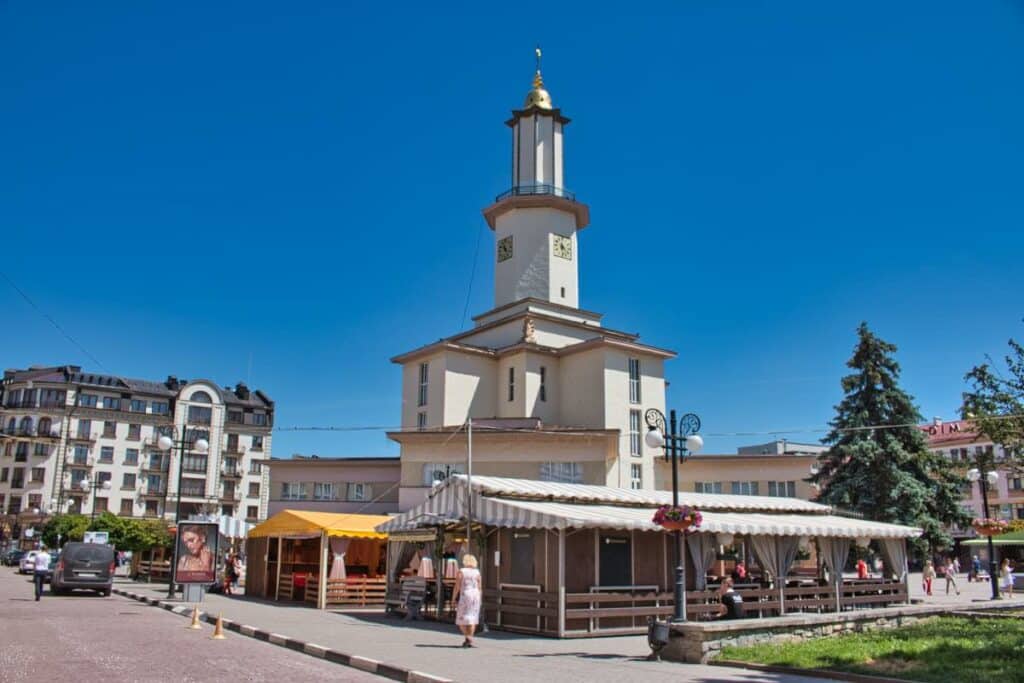
Sights in Ivano-Frankivsk
Ivano-Frankivsk is often referred to as little Lviv. However, the city does not need this pity. Besides the iconic city hall from the Golden Twenties, there are also some of the most impressive churches in Western Ukraine. Every year in April or May, there is also a blacksmith festival, where blacksmiths from all over the world come to demonstrate their arts live in front of the audience. The resulting works of art are then displayed around the city and now make up a fair number of small tourist attractions. Ivano-Frankivsk is therefore well worth an overnight stay on the way to the Carpathians.
Sights in Ternopil oblast
Ternopil Oblast is often overlooked, but some of the most beautiful sights of Western Ukraine are located here. Ternopil itself is also well worth a visit, especially the lake in the city with its excursion boat is a nice destination.

Kremenets
Kremenets is picturesquely surrounded by several mountain ranges. The ruins of Kremenets Castle offer you a fantastic view over the city. The former monastery school was once the most important educational institution in the region and a real attraction for students from all over Polish-held Ukraine. The architecture of the local high school still bears witness to this today. The Jewish cemetery, located on a hillside, is also a real Western Ukraine sight, because many well-preserved tombstones can still be found here.
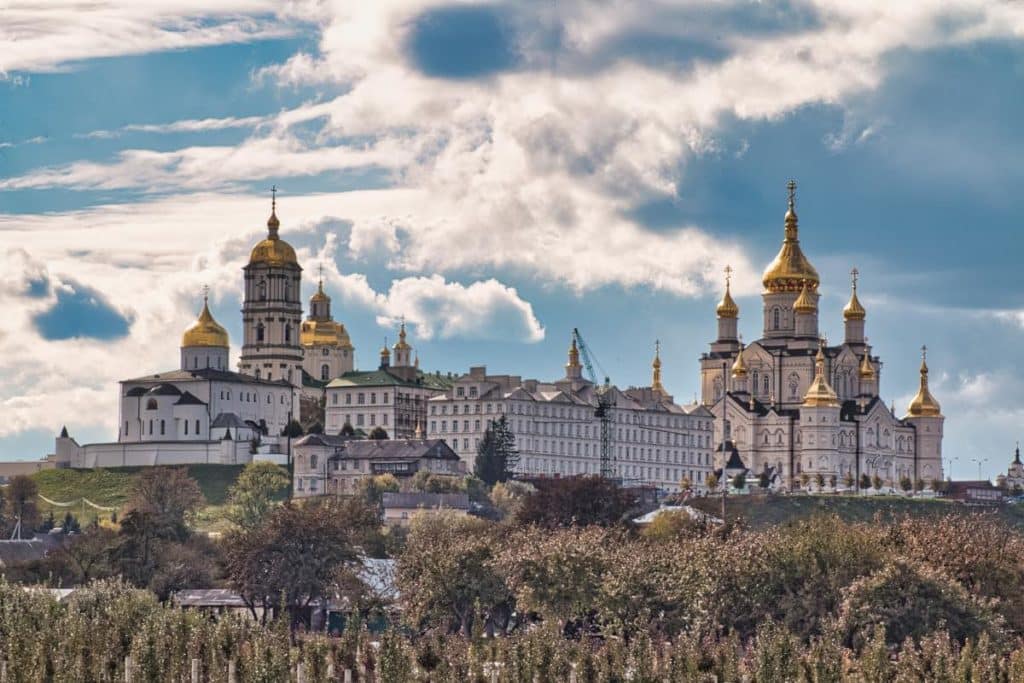
Pochayiv Lavra
The Monastery of the Assumption of the Virgin Mary in Pochayiv is the second largest monastery in Ukraine after the Cave Monastery in Kyiv. Dozens of Orthodox monks run the complex which is also a popular pilgrimage site. If you are brave, you can squeeze into the cave through a tiny crack, which once established the important pilgrimage site. There are also half a dozen churches to visit here. Believers can spend the night here and participate in the emotional masses and get a little closer to the monastic life.
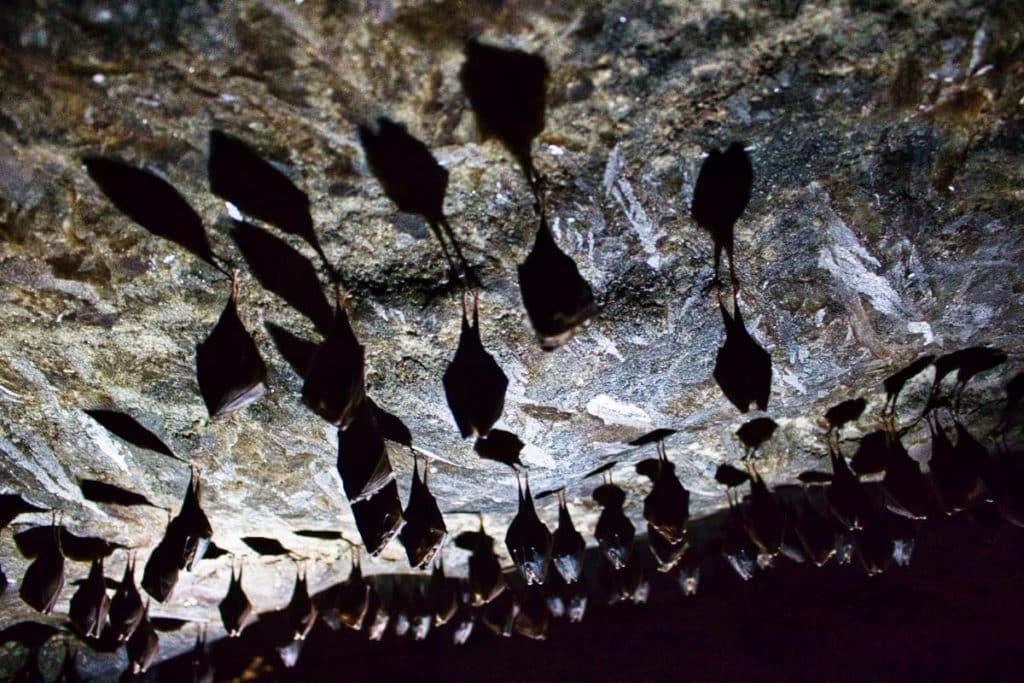
Caves near Ternopil
The Optimist Cave, located south of Ternopil, is the longest cave in Ukraine with 262 kilometers. The gypsum cave can be visited on guided tours, where trained guides will not let you walk for 262 kilometers, of course. Instead, you get to see a section of the cave, learn all about its formation and also about the current animal inhabitants. Around the Optimist Cave, there are many other caves that can be explored on visits. In the so-called Priest’s Cave, or also called the Lake Cave, several Jewish families hid during the Holocaust and thus survived the Shoah.
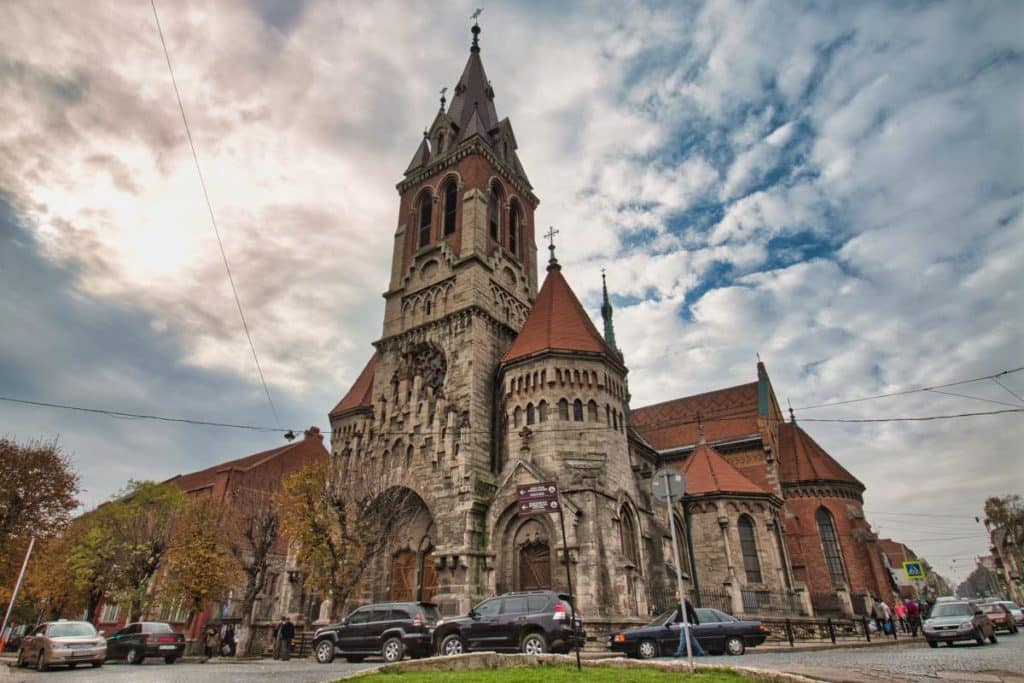
Chortkiv
Chortkiv was not only an important town during the Polish rule over the region. An important front between the Russian and Austro-Hungarian armies passed through here during the First World War. Tens of thousands of soldiers, including Germans, died in battles in the vicinity. The city itself was not completely spared. Nevertheless, you can still admire the St. Stanislaus Church, which is one of the most beautiful in the region. Several wooden churches from the 16th and 17th centuries and the local fortress bear witness to the town’s former importance. In addition, two synagogues have been preserved to this day, as a third of the population here was also Jewish until the Holocaust.
Sights in Volhynia
Volhynia is one of the most famous regions of Ukraine and also an ancient cultural landscape where Ukrainians and Poles, Russians and Germans, Jews and even Lithuanians settled for centuries. Today the region is mainly divided into the oblasts of Volhynia with the oblast capital Lutsk and the oblast of Rivne with the capital of the same name. Even if Rivne as the oblast capital is rather avoided by many, the city has some charm. The nightlife with some bars is quite lively. If you use Rivne as a base, you can choose from several places in the area for a day trip.
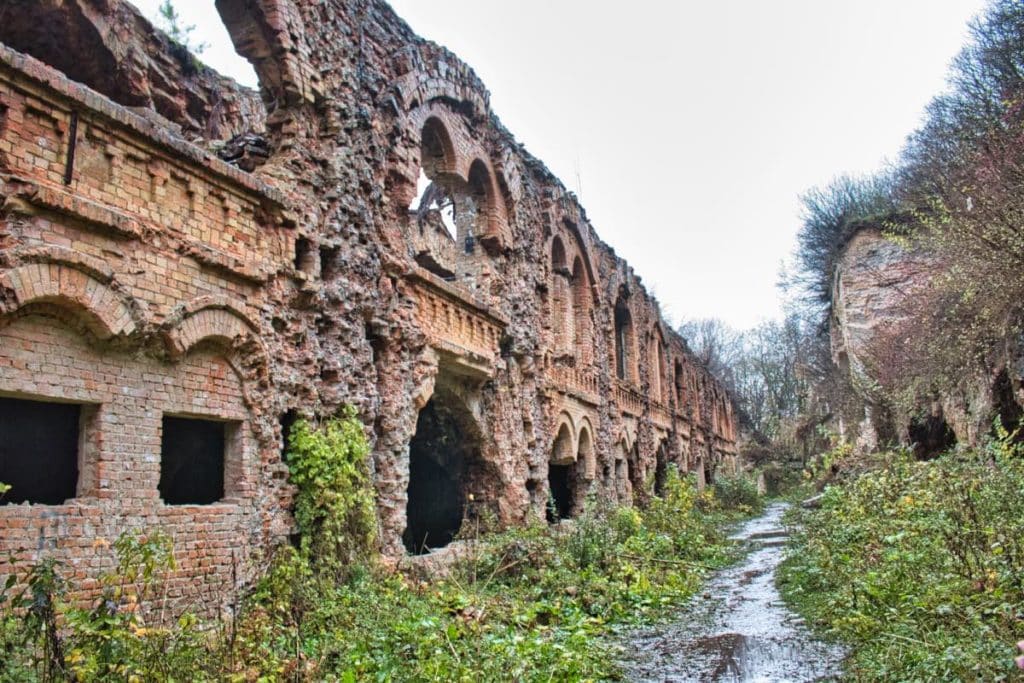
Tarakaniv Fortress
Located only a few kilometers from the border of the Russian Tsarist Empire with Austria-Hungary, the Russians built this huge fortress complex at the end of the 19th century. On a guided tour, you can still get an idea of how the once more than 300 soldiers and their families lived here. The seemingly endless corridors with meter-thick concrete walls give the impression that this fortress was built for eternity. However, the huge investment costs in the end did not pay off and did not affect the outcome of the First World War.
Tunnel of Love
The Tunnel of Love (see cover picture) is really one of the special sights of Western Ukraine. Because it is actually not a tunnel but a railroad line cut into the undergrowth of a swamp, which is kept free of brushwood to this day and thus looks like a tunnel through the thicket. The motif has been sold as a photo wallpaper by a few photographers in Asia, among other places, and has become particularly popular there. Today, tourists from Japan, China or Thailand come to this remote region of Rivne Oblast specifically for the Tunnel of Love. We think it is indeed a great photo location. But be careful: trains actually still run here!

Lutsk
Lutsk was already a town when it belonged to the then Grand Duchy of Lithuania in the 14th century. Therefore, the mighty castle in the town bears the name of the Lithuanian governor of that time, Liubartas. Later even Grand Prince Vytautas had a residence in the town. Besides the magnificent castle, the small old town and the synagogue are also worth a visit. A more modern masterpiece is the house of architect Mykola Holovan, which is one of the curious Western Ukraine sights.
Shatsky Lakes and Shatsky National Park
Shatsky Lakes are one of the largest lake areas in Ukraine and a biotope with incredible biodiversity. In the 24 lakes of the area you can not only swim and canoe. There are guided hiking and biking tours through the national park, where you can learn more about the species of birds and wild animals living here. In the evening, you can barbecue shashlik in one of the guesthouses by the lake and enjoy the sunsets over the lakes.


